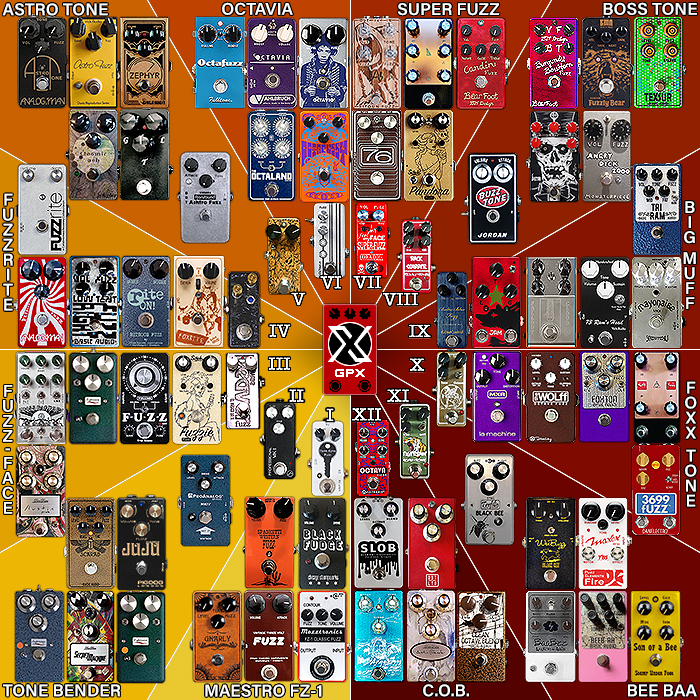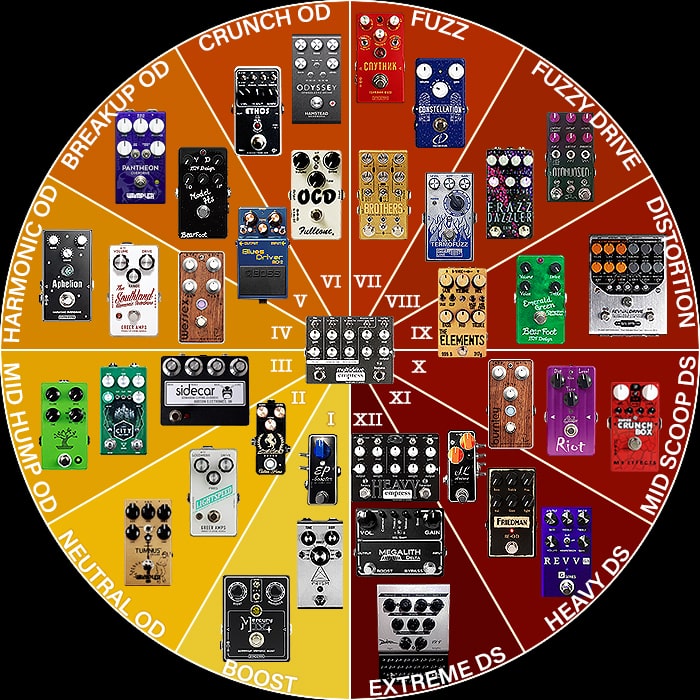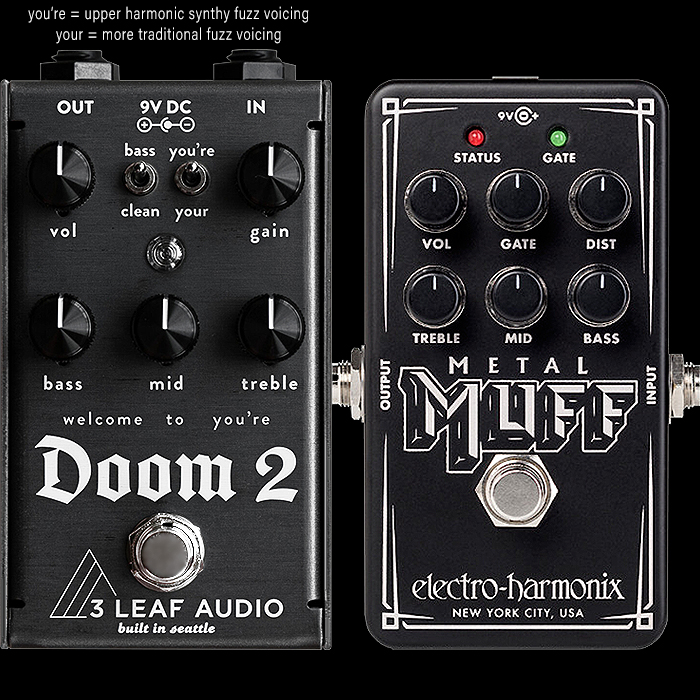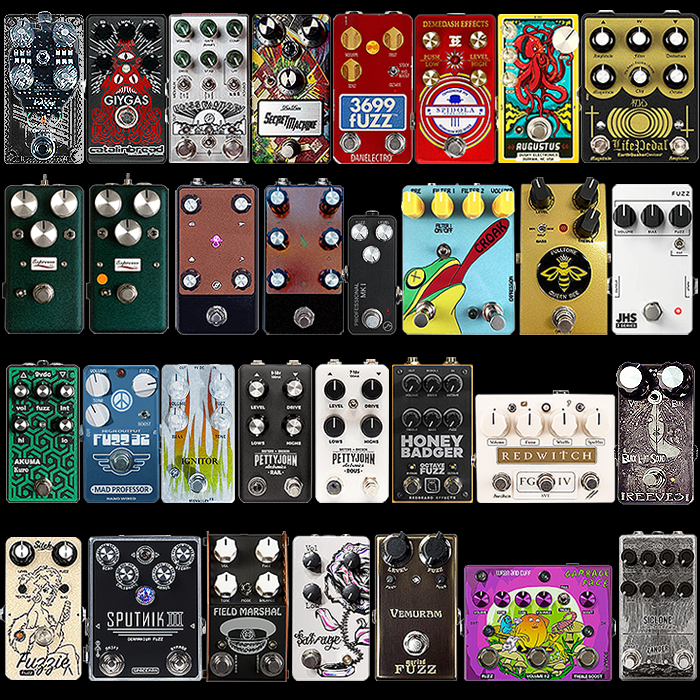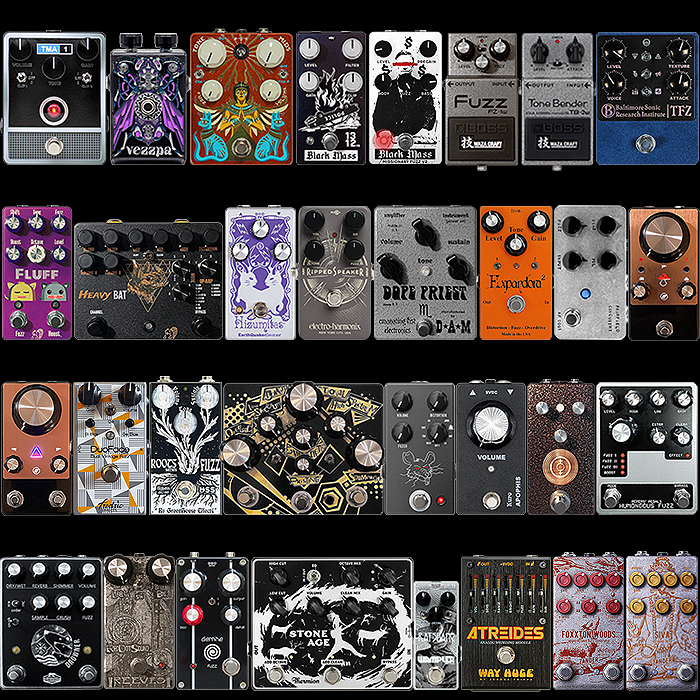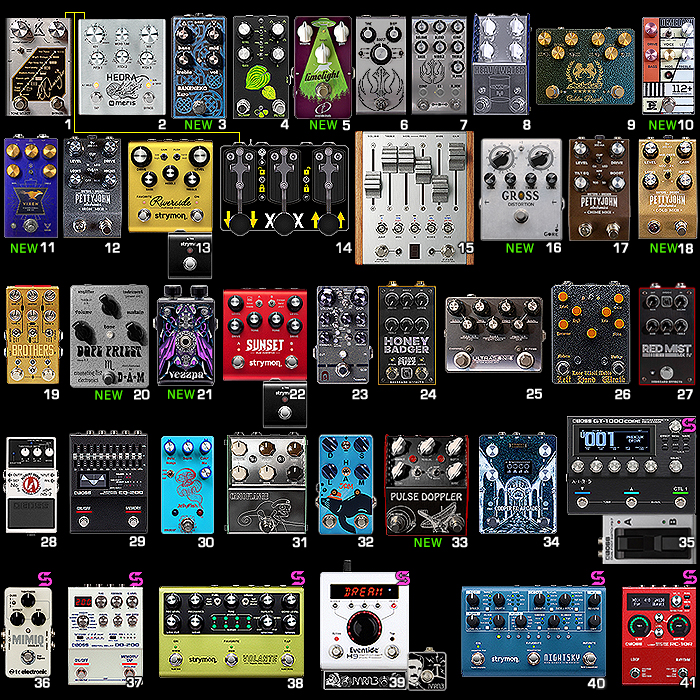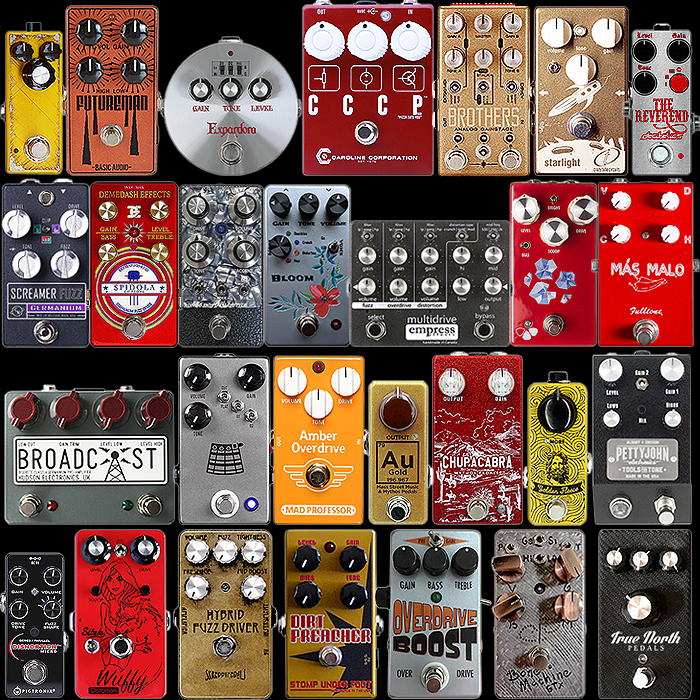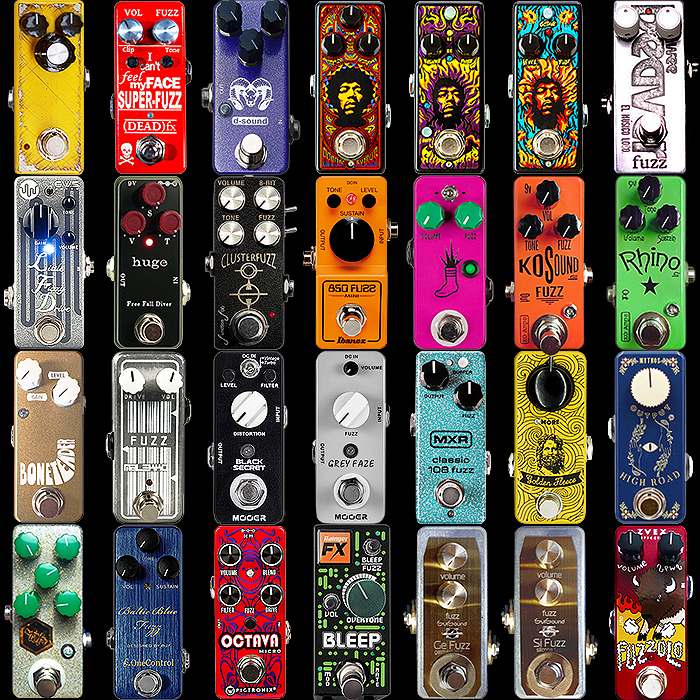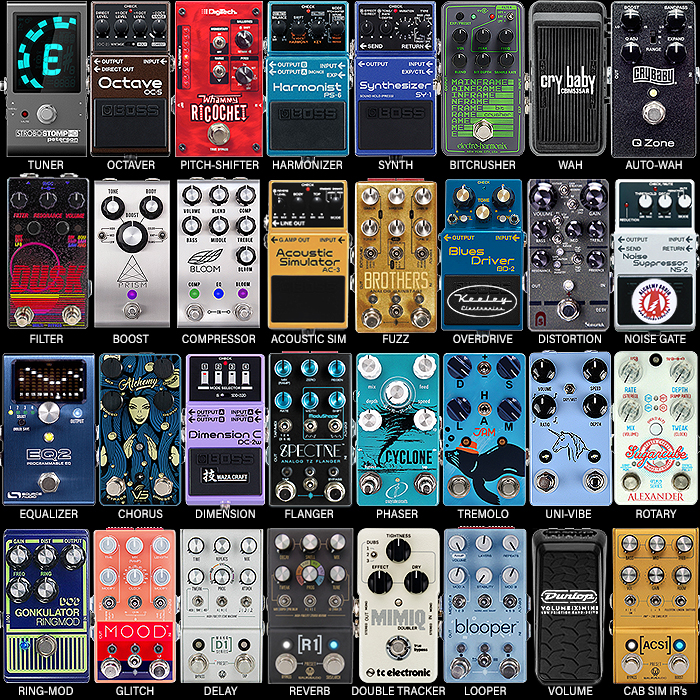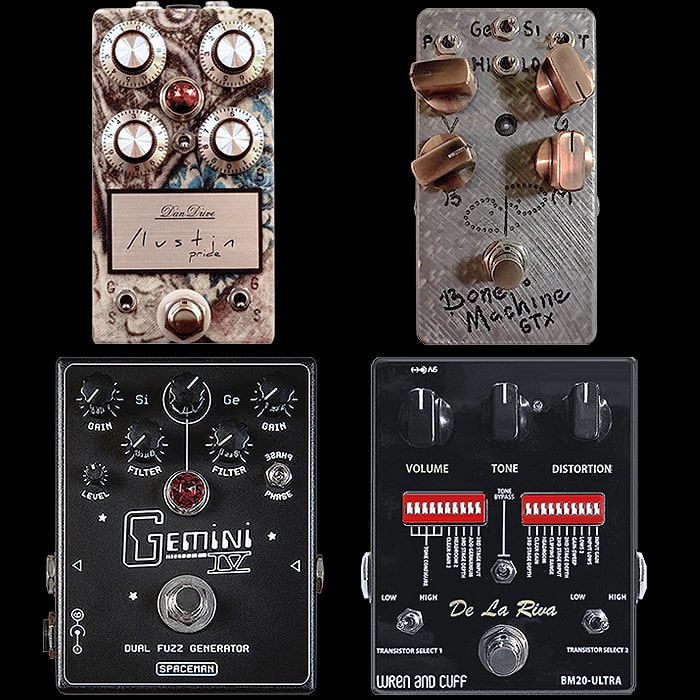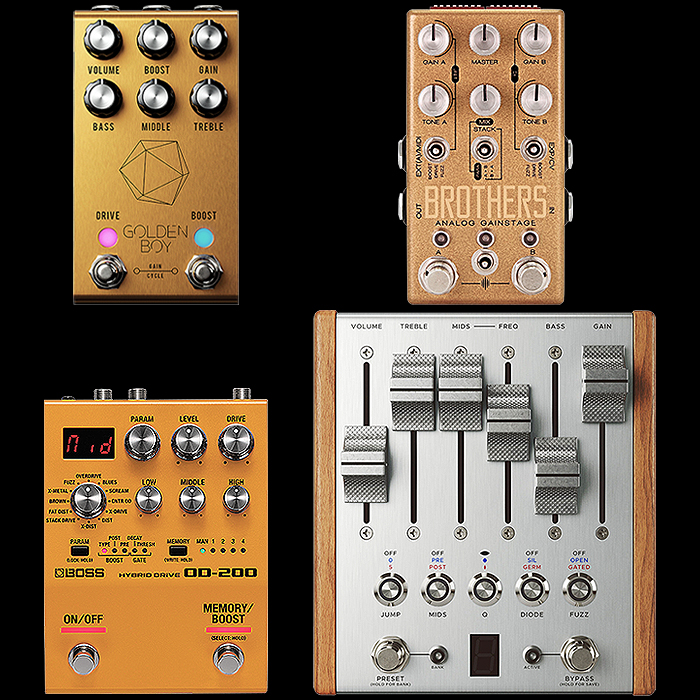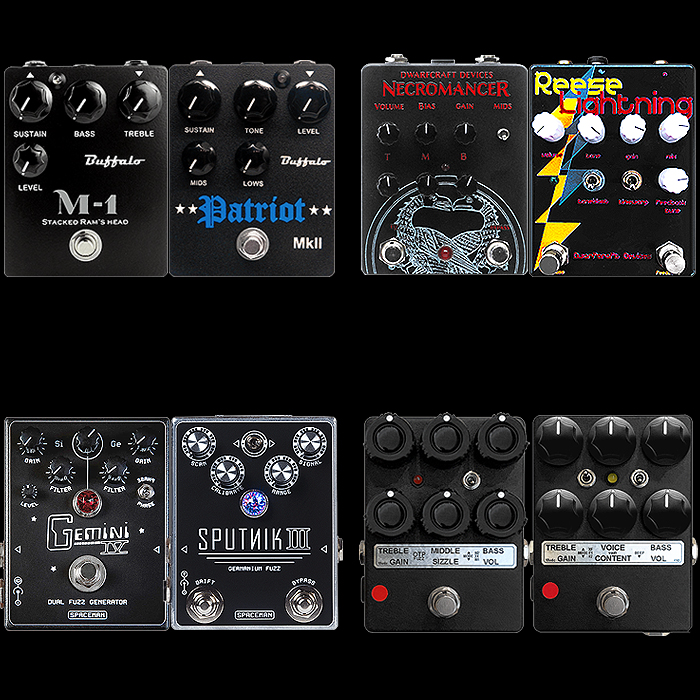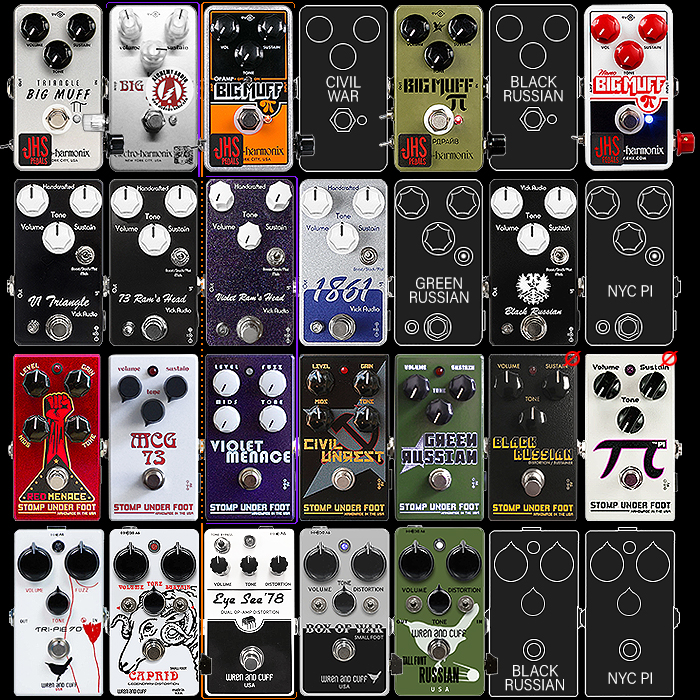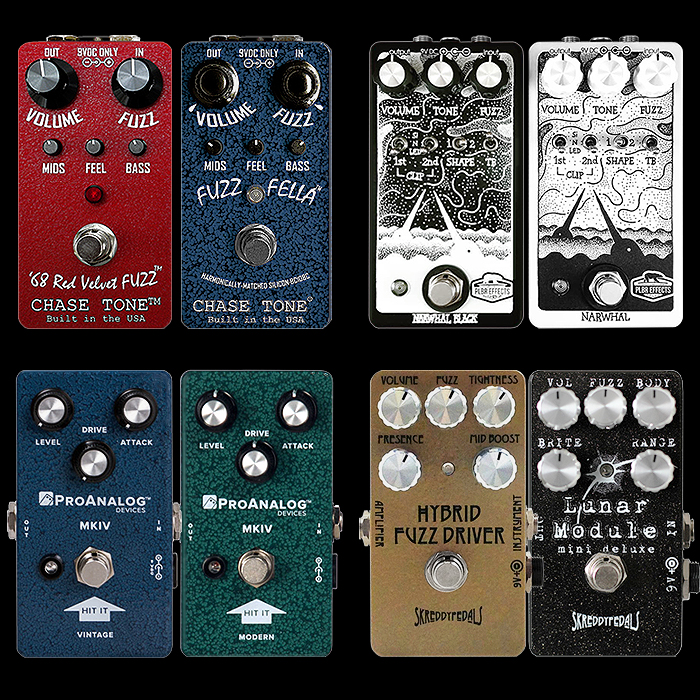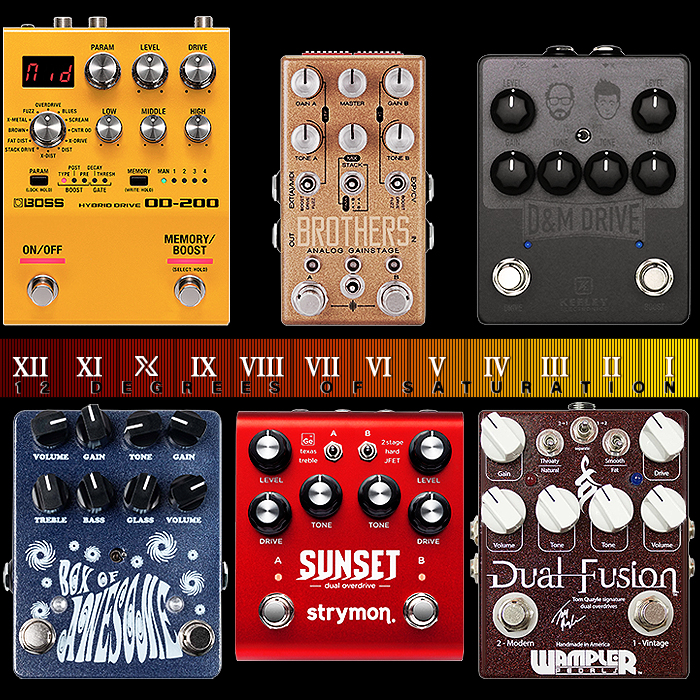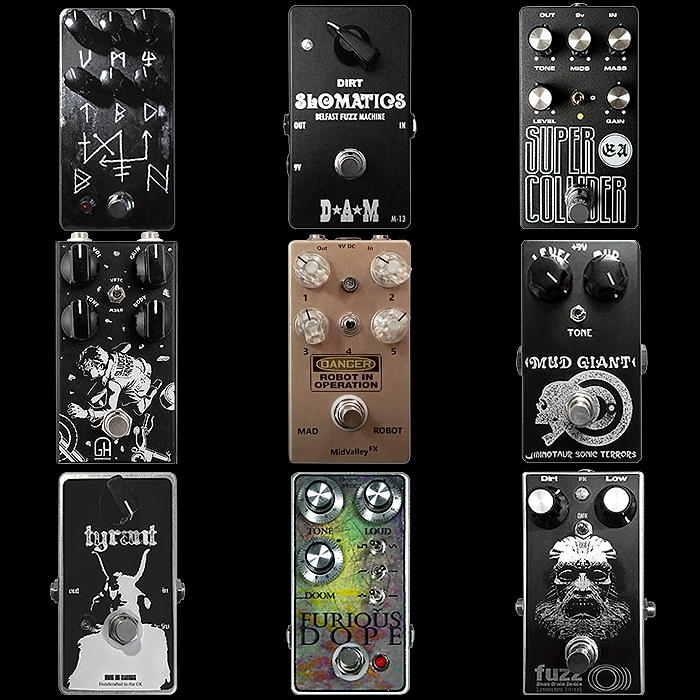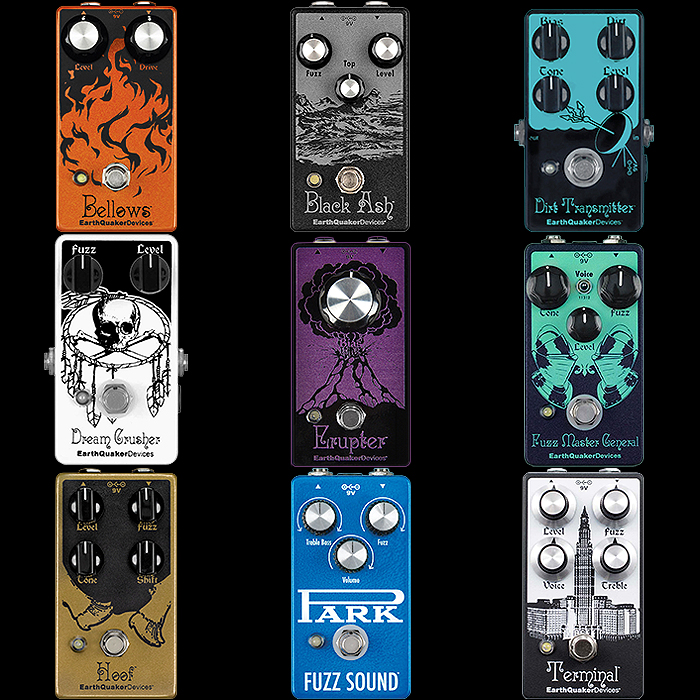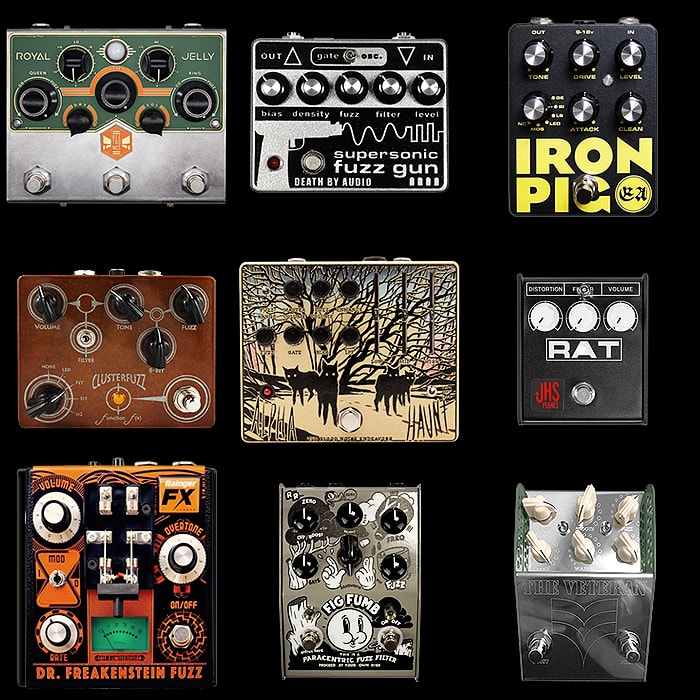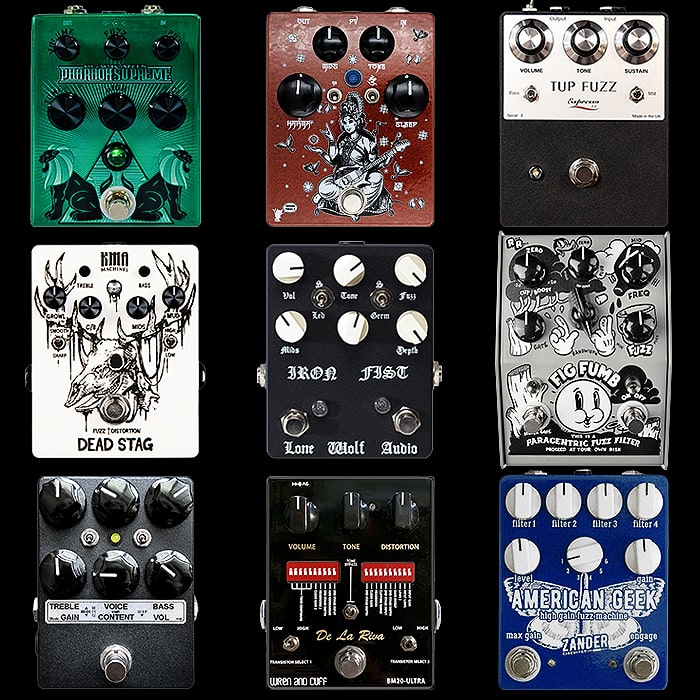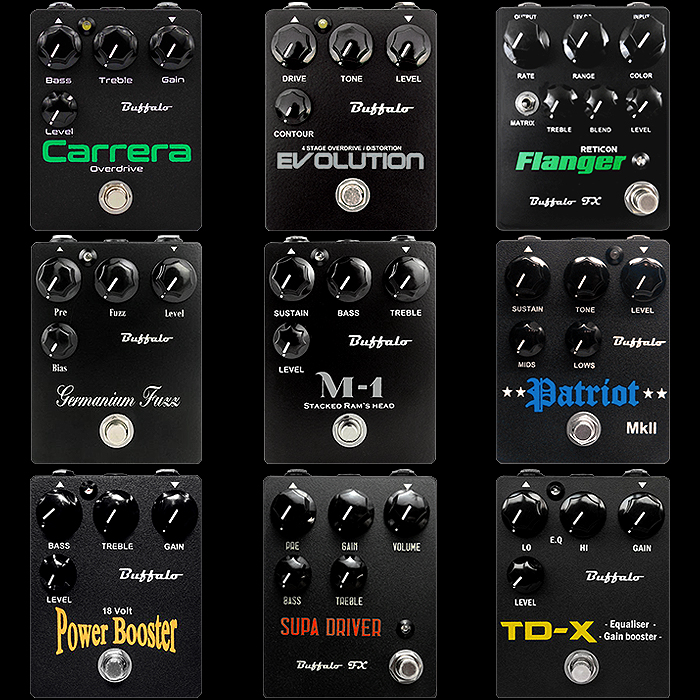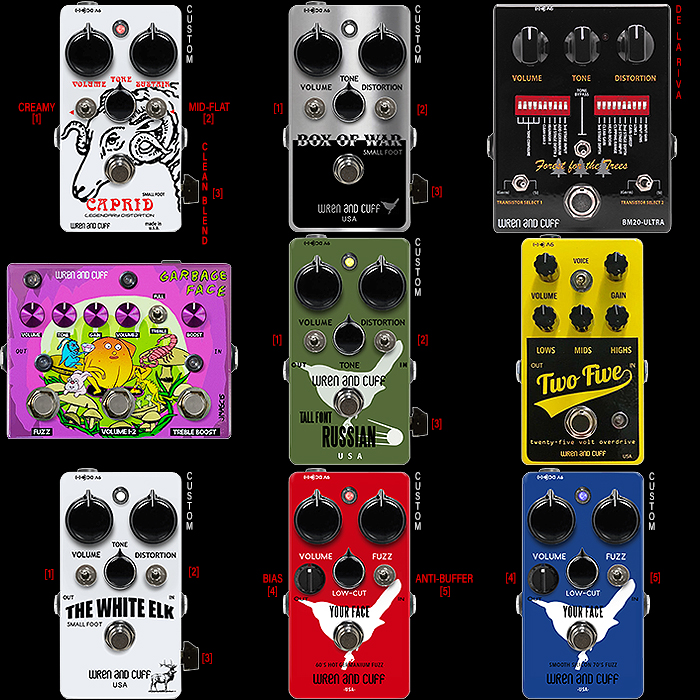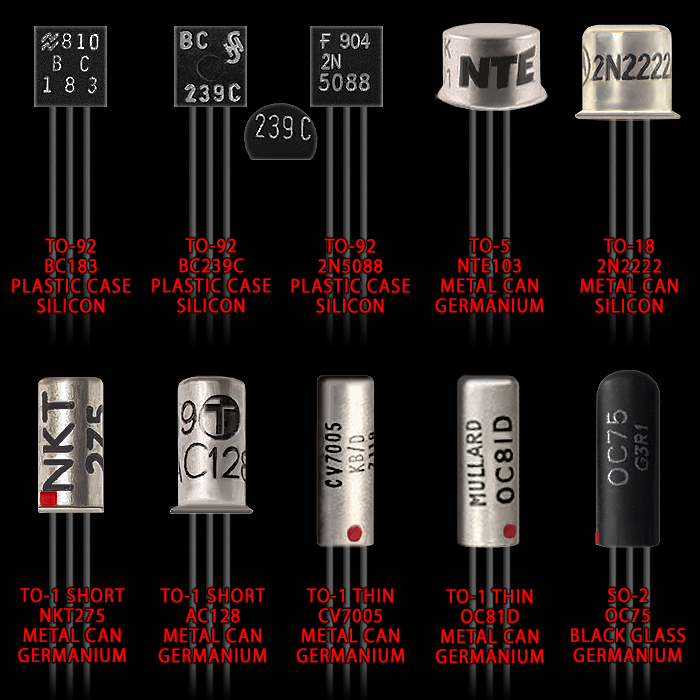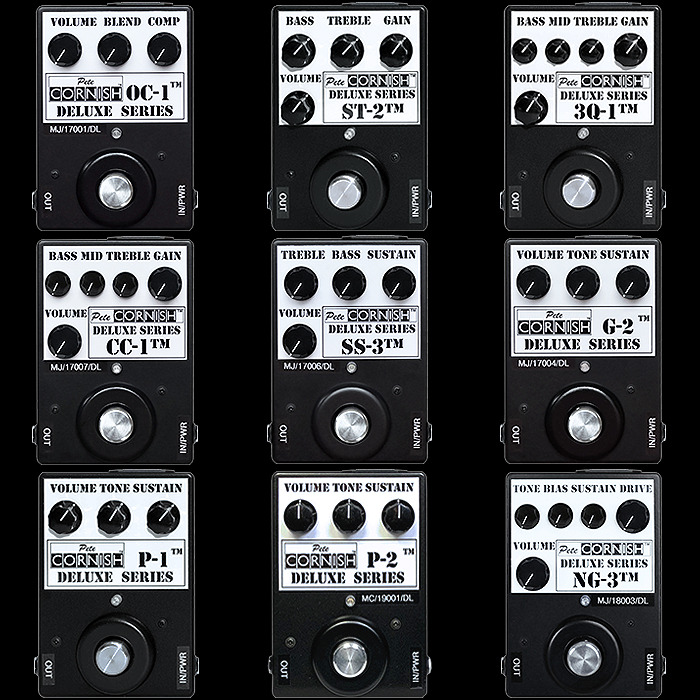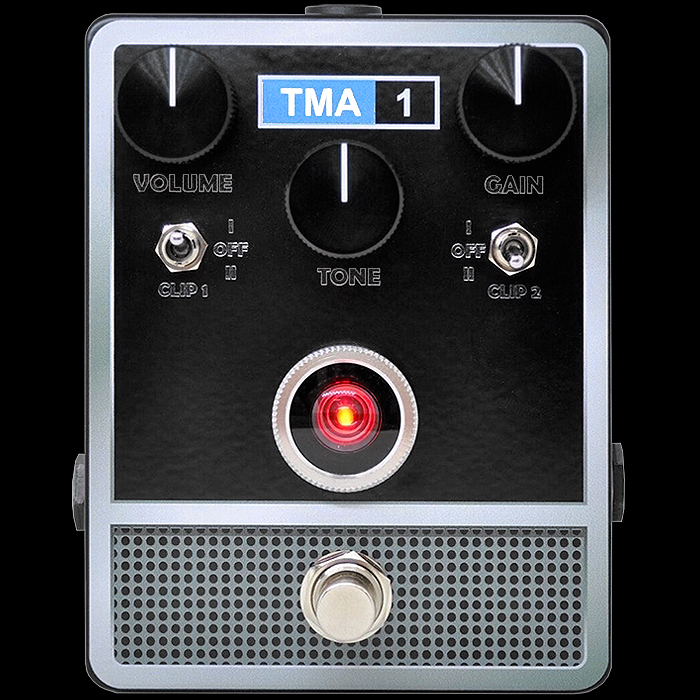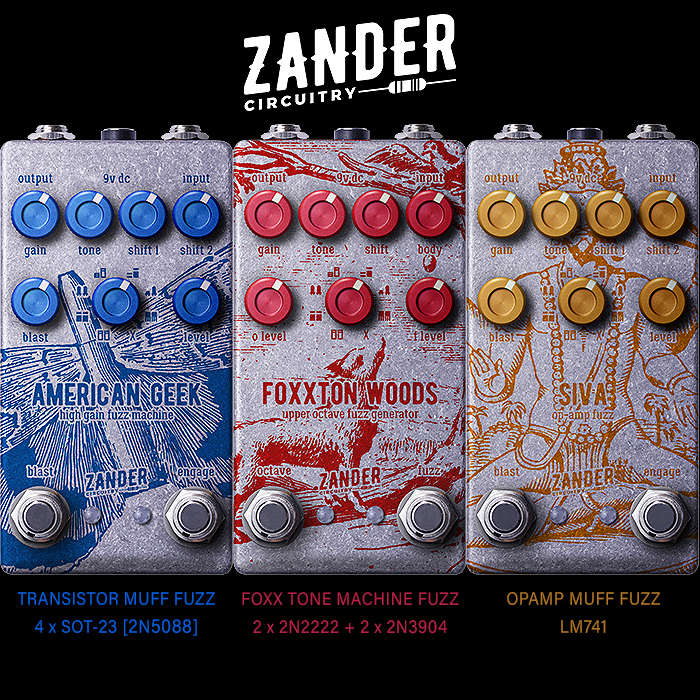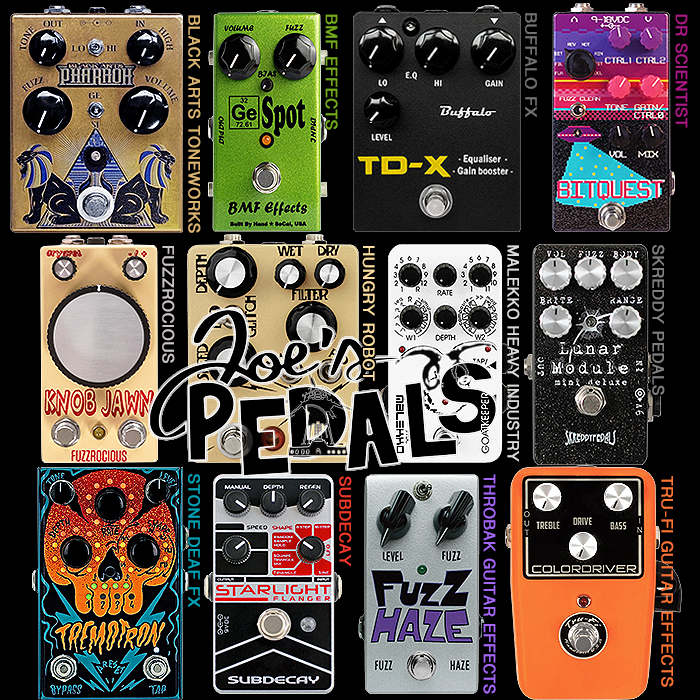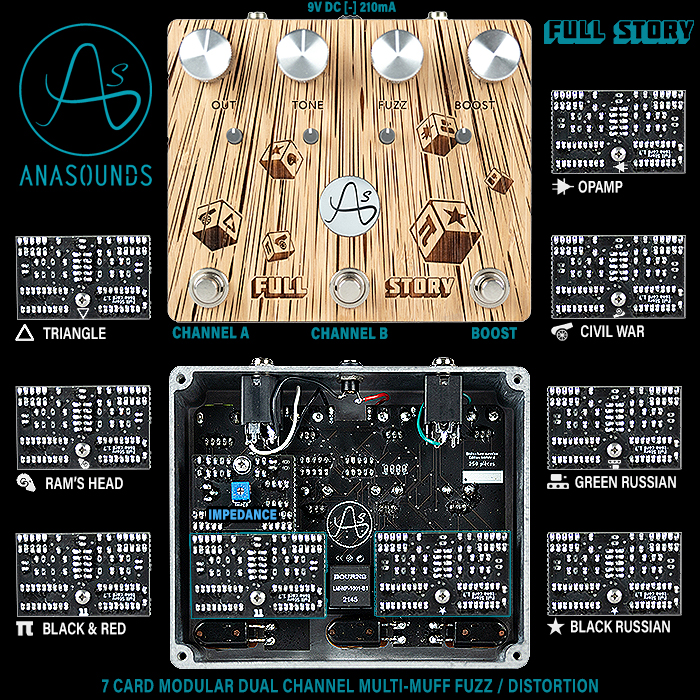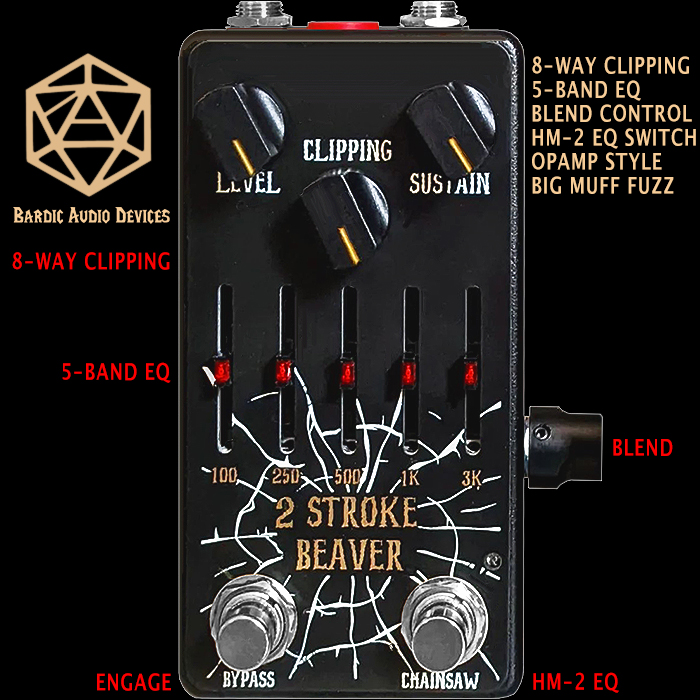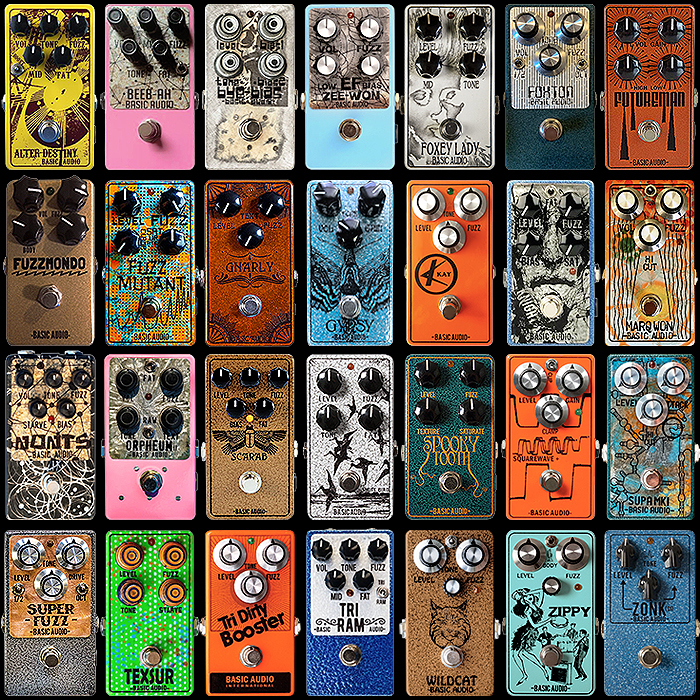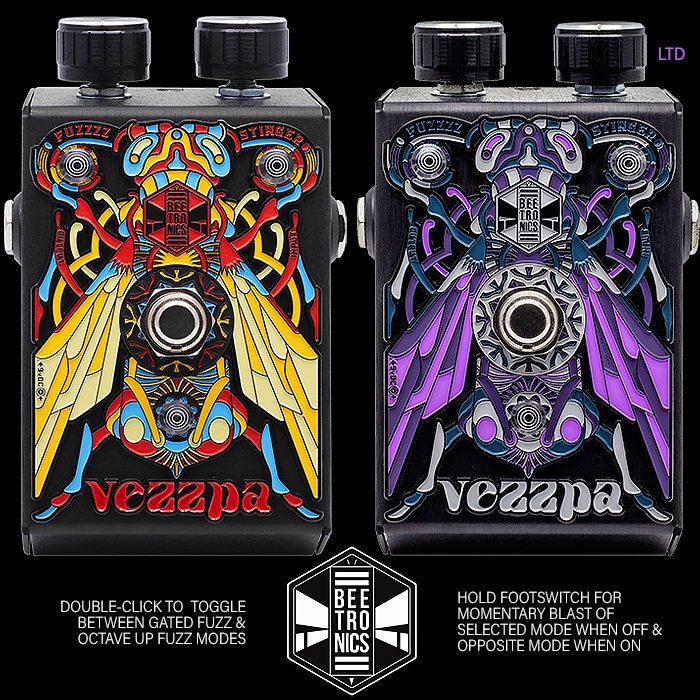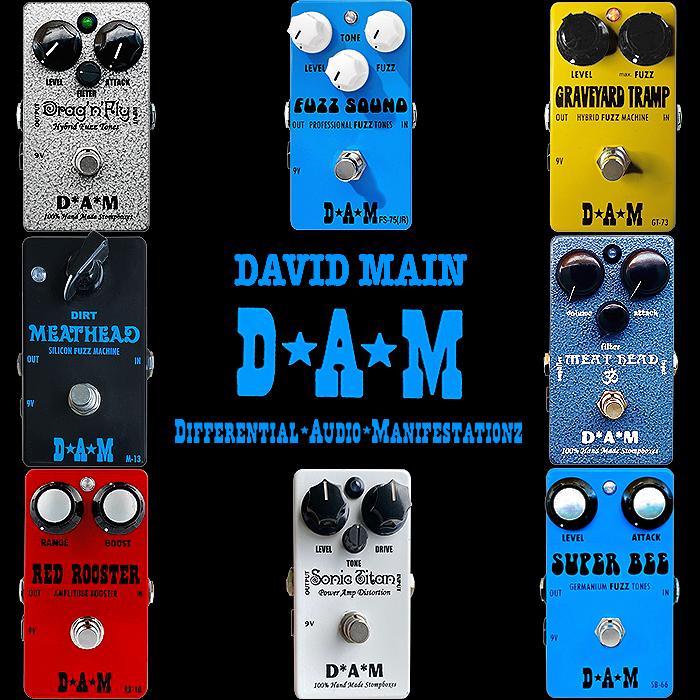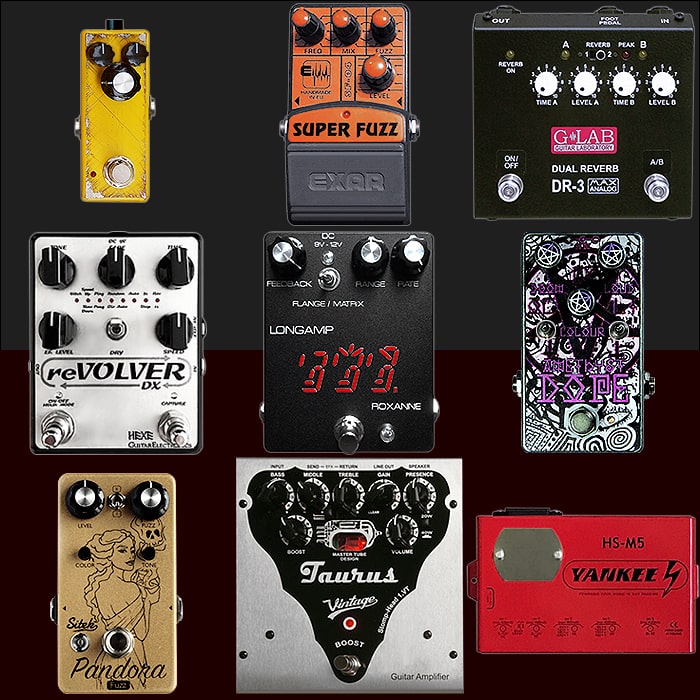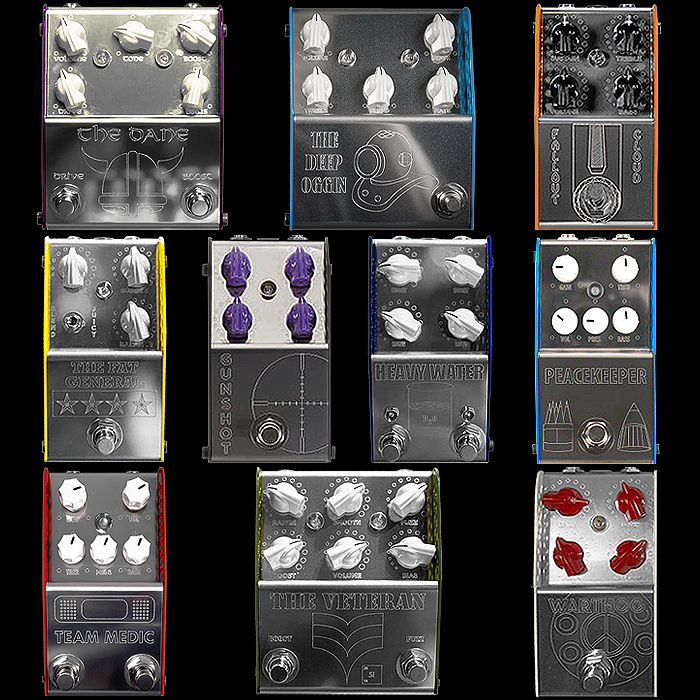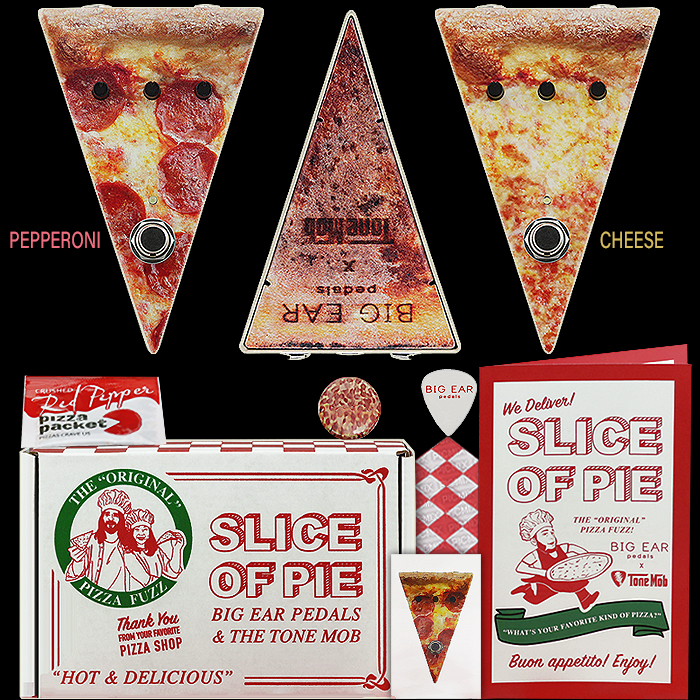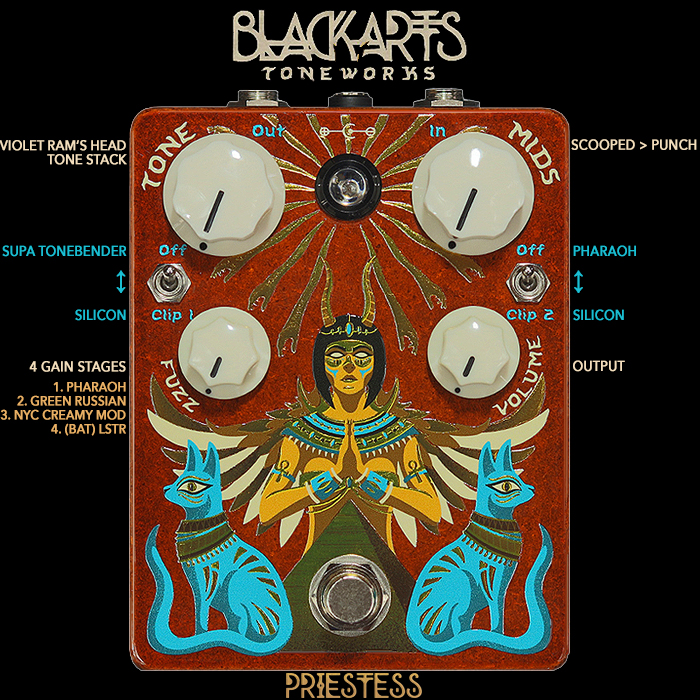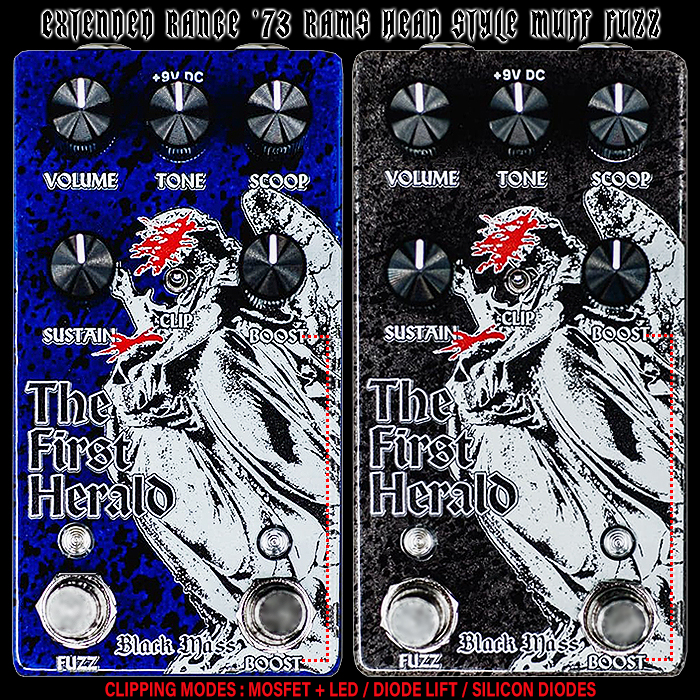The Emanating Fist Electronics Dope Priest DP-70 is the Ultimate Primal / Primitive High Gain Big Muff Style 4-Transistor Fuzz

The Dope Priest’s original inspiration is quite a twisted origin story which touches on Guild, Mosrite, and Big Muff Creator / Electro-Harmonix Founder Mike Matthews. Back in 1967 during the height of Hendrix Mania - Guild Founder Al Drunge thought he could capitalise on the Hendrix Fuzz craze by commissioning Mosrite to OEM and essentially re-label their Fuzzrite pedal as the Guild Foxey Lady Fuzz. So very similar to all those Sola Sound projects where they OEM’d essentially their same Tone Bender circuits and re-branded those variously as Marshall, RotoSound, Vox etc.
In any case, Mosrite was not a well-run business at that time, and after 3 batches of circa 1,000 Guild Foxey Lady Fuzzrites that business went bankrupt - even though the Foxey Ladies were selling quite well. Al Drunge therefore put out another call for a production partner to keep on making Guild Foxey Lady Fuzzrites. And pre-Electro-Harmonix Mike Matthews was the one to answer that call. Where he teamed up with New York audio and amp repairman William (Bill) Berko who evolved the circuit a little and produced new editions at his ABCO Sound workshop. William did not hang around either though, and later Mike had to switch production to another contractor - Aul Instruments. Then in October of 1968 Mike Matthews decided that the time was ripe to found his own New York-based electronics production company - Electro-Harmonix NYC, and manufacture of the Guild Foxey Lady was brought in-house as the first product to be worked on.
At around the same time Mike was designing his own very first fuzz circuit - which would become the Electro-Harmonix Axis Fuzz (Not to be confused with the Roger Mayer Axis Fuzz!) - essentially a stripped down 2-Transistor, 2-Knob early Big Muff prototype of sorts. In the next phase of Foxey Lady evolution, Mike switched manufacture over to the Axis Fuzz - which was then also re-labelled as the Guild Foxey Lady for that incarnation of the pedal. And then finally in 1969 the Axis evolved into the 4-Transistor, 3-knob V1 Big Muff Pi (Triangle) that we all know and love. Much like with the Sovtek Red Army Overdrive and Sovtek Big Muff Civil War - which were actually exactly the same circuit that fully co-existed at the same time - just a different label and branding applied - where initially there was a mix of variously labelled Red Army and Civil War editions of essentially the same pedal. So it was with what had become circa the 5th version of the Guild Foxey Lady - which was just a re-labelled V1 Triangle Big Muff Pi.
So the Foxey Lady started off as a re-badged Mosrite Fuzzrite, before being tweaked and refreshed, and later further evolved into the first EHX Axis Fuzz re-labelled equivalent, and then the official original Big Muff Pi variant. For the longest time I misunderstood the Foxey Lady legend that it was the very first proper Big Muff - before there were official Big Muffs, while the truth is that the original V1 (Triangle) Big Muff Circuit was simply again just re-labelled as a Guild Foxey Lady too - so both those varieties co-existed pretty much simultaneously. It’s that version of Foxey Lady that this Dope Priest was supposedly originally inspired by.
From the top this looks like a regular BB-enclosure and to all intents and purposes has that same footprint - while it’s nearly twice as deep and makes for quite a ’brick’ - which would seem to make it a 1590C style enclosure - per the following dimensions :
- 1590BB = 119 mm x 94 mm x 34 mm
- 1590C = 119 mm x 94 mm x 56 mm
This has that slightly rawer high gain sound of the very first 4 x 2N5133 official Big Muff Pi - while the transistors David Main makes use of on this occasion (for the DP-70 model) are the excellent higher gain BC549C types.
I have long admired the 2nd Wave of UK Fuzz Lords - Stu Castledine, Steve Williams and David Main - who followed on from OG UK Fuzz Legends Gary Hurst, Ivor Arbiter and Roger Mayer. This is actually my first David Main pedal acquired - while I’ve been after a D*A*M Meathead too for a while now - ideally the Slomatics edition! I have the key current signature Steve Williams Fuzz - the JuJu MKIII, but have still to identify the right Stu Castledine pedal for me to acquire. Readers will know that I have a distinct preferences for at least 3-knob compact fuzzes, and most of what Stu makes is oversized vintage-style enclosures with often only two controls.
David Main really doesn’t produce many Dope Priests - in fact he only does batches every other year or so and they are incredibly limited affairs - with typically only around 10 pedals in the run.
There are actually 3 Models in this series as follows :
- DP-70 (Mine) : High Gain Early 1970s style primitive fuzz tones. Balanced vintage EQ response with aggressive attack. BC549C transistors. White status LED.
- DP-75 : Dynamically responsive highly controlled mid-70s saturation. Responsive midrange heavy EQ timbre. BC549 transistors. Violet status LED.
- DP-93 : Low noise heavy duty Soviet inspired fuzz / overdrive. Broad ranging full frequency tonal characteristics. BC109C transistors. Blue status LED.
This year’s batch was very briefly available from Joe’s Pedals at a princely rate of £309 groats - and consisted of just 10 pedals - 4 of the DP-70 edition, 3 of the DP-75, and 3 of the DP-93. All 3 varieties are really excellent and sort of equate to Triangle, Ram’s Head and Russian edition Big Muffs.
Over the years the format of this series has changed considerably in the style and size of enclosure. So this particular batch seems the most perfectly formed for my preferences - but I really don’t want to be greedy and would want as many other players to share the experience - so I will rather be looking to acquire these one-by-one as long as this current format holds. Previous versions were really quite large, and a fairly recent batch arrived in quite modern black enclosures - where I feel the current incarnation is the most suited in look and feel to those original inspirations.
This is the kind of pedal that is enjoyed best fully unfettered - meaning you should crank up the Volume and Sustain for maximum texture - and adjust Tone to taste - just a little over noon for me. This is the kind of circuit that doesn’t typically respond to guitar volume roll-off - instead you get quite a cool but subtle hollowing out of the tone effect - which I quite like.
If you’re looking for a fully vintage inspired early Big Muff - then my DP-70 is likely the perfect candidate. The other varieties have their strengths too - but I would always start down this path with the Triangle version first - which is my favourite type - just ahead of Ram’s Head.
It’s something of a shame that these are made in such small quantities and are so difficult to get a hold of - while they’re usually well worth the journey. This article is obviously a little academic as all those pedals are long since sold. I just hope we don’t have to wait too long until the next batch. In any case you need to ensure you’re in good contact with and in the good graces of Joe Light at Joe’s Pedals if you want to try to secure one of these when they next materialise. While chances are that enclosure format may have changed once more. I sincerely hope David maintains the same perfect footprint for some time to come!




















